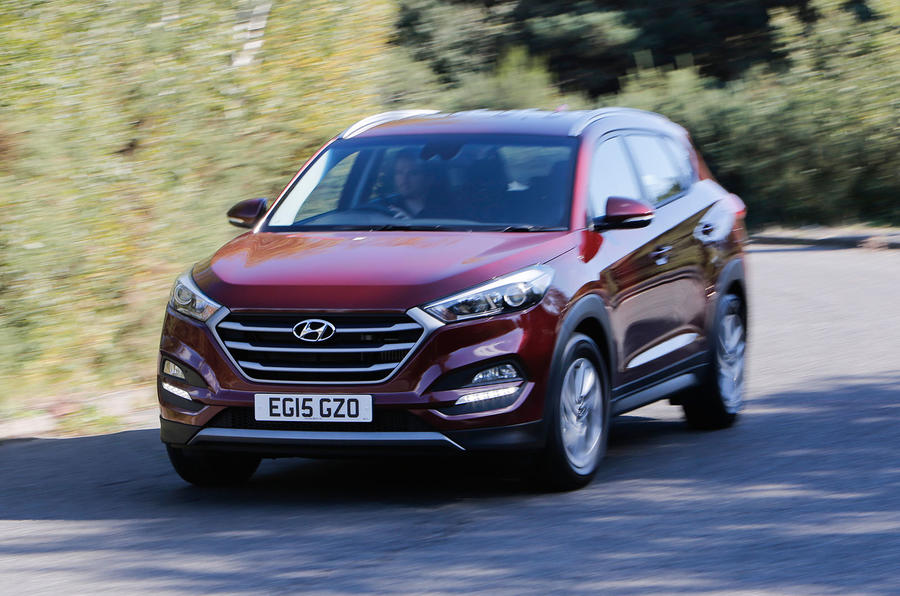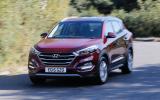It’s certainly an excellent car to drive around town. It feels that nimble and manoeuvrable that you’ll find yourself forgetting you're in a bulky SUV.
The 1.7-litre engine is willing at low revs and gets up to speed with little fuss thanks to a fairly linear power delivery. It is, however, almost two seconds slower to 62mph than a Qashqai, at 13.7sec to 62mph, mainly due to its significant kerb weight - the Tucson tips the scales at 2 tonnes, meaning it struggles to match its rivals for performance, economy or emissions.
Road and wind noise isn't too bad; the engine can be quite vocal under harder acceleration and it grumbles around town, sending some vibrations through the pedals and gearstick, while tyre noise builds noticeably at motorway speeds, although it is no worse than what you'll experience in most of the Tucson's rivals. The six-speed gearbox also has a substantial feel when shifting between ratios.
Despite that kerb weight, the Tucson handles well, its relatively firm suspension keeping body roll in check and maintaining composure on roundabouts and through a series of bends.
Around town the steering is light and precise but offers very little feedback. However, as the speed builds, the steering becomes increasingly vague and inconsistent, meaning you lack the confidence to commit to more challenging corners. The issue is particularly prominent when the standard Lane Keeping Assist System is active.
On smooth and well-maintained but undulating roads the Tucson feels nicely tied down, while speed humps are dealt with without too much body bounce. That said, the firm set-up struggles on rougher surfaces and can be quite uncomfortable over expansion joints at higher speeds.
Access and ride height are very good, meaning you're able to slide seamlessly through the large door aperture and into the driver’s seat. Getting comfortable is easy with seat height adjustment and an adjustable reach and rake steering wheel. There’s plenty of room for six footers and visibility is excellent all round, aided by a reversing camera and parking sensors.
Three adults can sit more comfortably in the rear than is possible in most small crossovers, thanks to a low transmission tunnel and good head, leg and shoulder room, although two adults will be happier in the back on a long journey. The boot has a square opening and its floor is level with a low loading lip. With the back seats folded down, though, the extended load bay floor isn’t quite flat.

























Join the debate
Add your comment
Lane assist - does anyone like it?
which is likely to be 40 mpg if your are lucky
Autocar, 2000kg is the gross
Given that the article then presupposes other shortcomings because of the enormous (and erroneous) kerb weight I think this article is in need of some reappraisal.